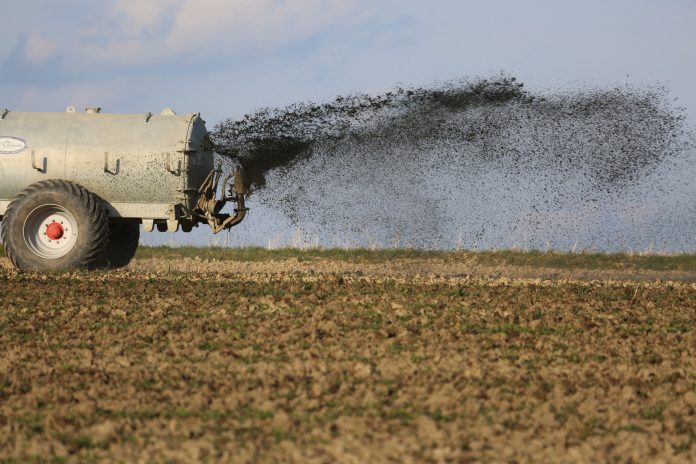Fertilizer, fuel, and labor associated with crop fertility are a significant input cost for farmers each year. Finding a strategy to reduce these costs is a frequent conversation for most farmers each year. The rapid increase in fertilizer and fuel prices in 2022 brought this conversation front and center. Although fertilizer prices have steadily declined over the past year, lower anticipated crop prices for 2024 and higher diesel prices will stress crop budgets this planting season.
Fuel prices are largely outside of our control, but there are several ways to reduce the fertilizer bill. Soil testing every 3-4 years and making applications based on the results is the foundation of a solid nutrient application strategy. Once you have the results you can make informed decisions on where to best spread your manure and supplement with commercial fertilizer if necessary. It’s not always easy or convenient, but this may require hauling manure farther from the lagoon or barn. We all know the one field that gets a little extra attention when the weather is bad, or the day is getting long. Putting the nutrients where they are needed is always the best strategy.
Finding alternative fertilizer sources is also an option. With decent amounts of nitrogen and phosphorus, and very low cost of application, biosolids are an attractive option for some farmers to cut their nutrient bill. Biosolids are the organic solids that remain after the wastewater treatment process.
Approximately 300,000 dry tons of biosolids are produced in Ohio and Pennsylvania each year. Of that, about a third of the biosolids are used applied to agricultural fields for beneficial nutrient use.
Benefits of biosolids. Biosolids are generally a good source of nitrogen, phosphorous and several micronutrients. Nutrient analysis may vary by wastewater facility, treatment process and by the batch. You will be provided a nutrient analysis when biosolids are delivered/spread on your field. Some facilities treat biosolids with lime, so you may also get some liming benefits.
It’s hard to argue the cost of biosolids — they are usually free or have a very low cost of application. The opportunity for next-to-free nutrients is what usually grabs the attention of farmers. The organic matter is also very high, typically 50-70%, benefitting soil health.
Biosolid classifications
There are different classifications of biosolids depending on the level of pathogen reduction, vector attraction reduction and overall pollutant load. For biosolids to meet the most stringent classification of Exceptional Quality (EQ), they must have pathogens significantly reduced (virtually absent) and very reduced pollutant levels. Biosolids that meet the EQ requirements have very low public health risk are are less regulated than non-EQ.
Non-Exceptional Quality, known as Class B in Ohio, has reduced pathogen and vector attraction but does not meet the EQ requirements. Class B biosolids are heavily regulated for beneficial nutrient use. Land application of Class B biosolids are made based on soil test analysis, and in Ohio rates are calculated using the Tri-State Fertilizer Recommendations. Additional monitoring is required to track heavy metals in the soil to prevent any potential contamination.
Biosolids that have very high levels of pathogens, heavy metals, pollutants or other contamination are not acceptable for use on agricultural fields. Some refer to this classification as sewage sludge. These materials have no beneficial use and are disposed of in a landfill or incinerated — not applied to agricultural fields.
Concerns
Biosolids are highly regulated to ensure pathogen reduction, low pollutant levels and are safe for human health. There are trace amounts of pollutants in biosolids, and the repeated application of biosolids to the same field may result in the accumulation of heavy metals or other pollutants. Heavy metals are the largest concern and the Environmental Protection Agencies (federal and state) have very strict limits on the total amount accumulated. Application setbacks are required to stockpiles and application from wells, waterways and houses.
Other risks include the accumulation of pollutants that are not currently monitored, or known pollutants. “Forever chemical” pollution, such as PFAS, has occurred in several states with the application of biosolids. There is also some emerging research showing the potential for pharmaceutical leaching under certain treatment/application scenarios.
In addition to the environmental concerns, you will also have to navigate the smell and stigma of using biosolids with your neighbors. Although biosolids are treated, they do have an odor when spreading that will likely not impress your neighbors. Due to less regulation in the past, there is a strong stigma against the use of biosolids. But biosolids used for beneficial use today is very different than the raw septic sludge used decades ago.













